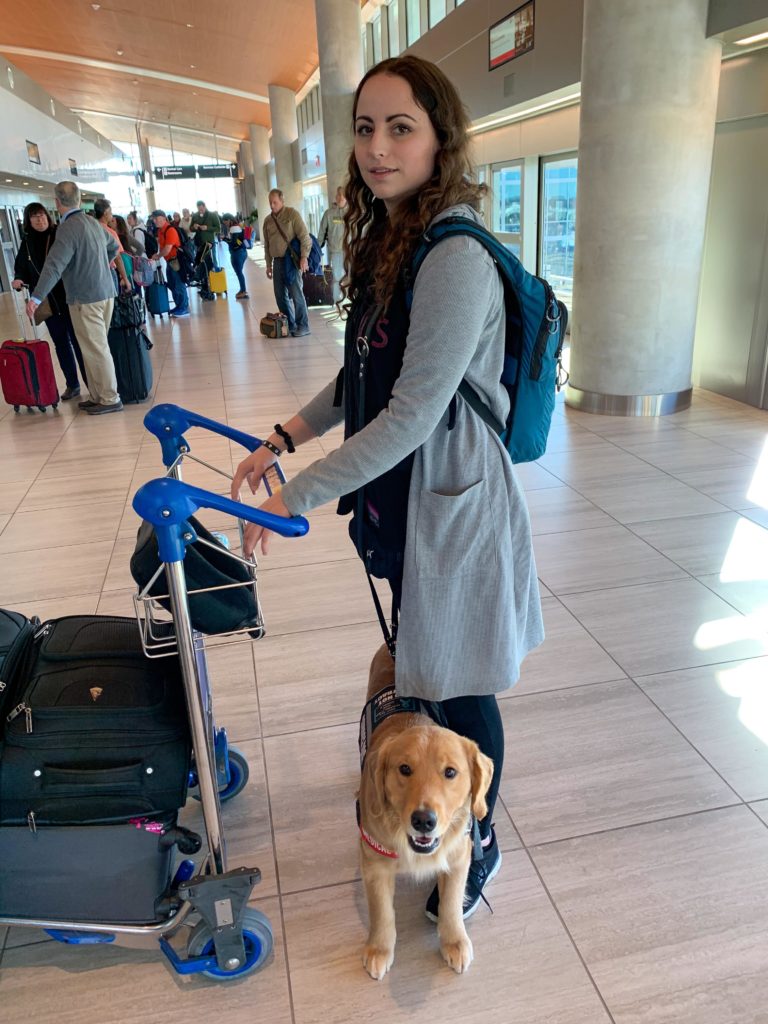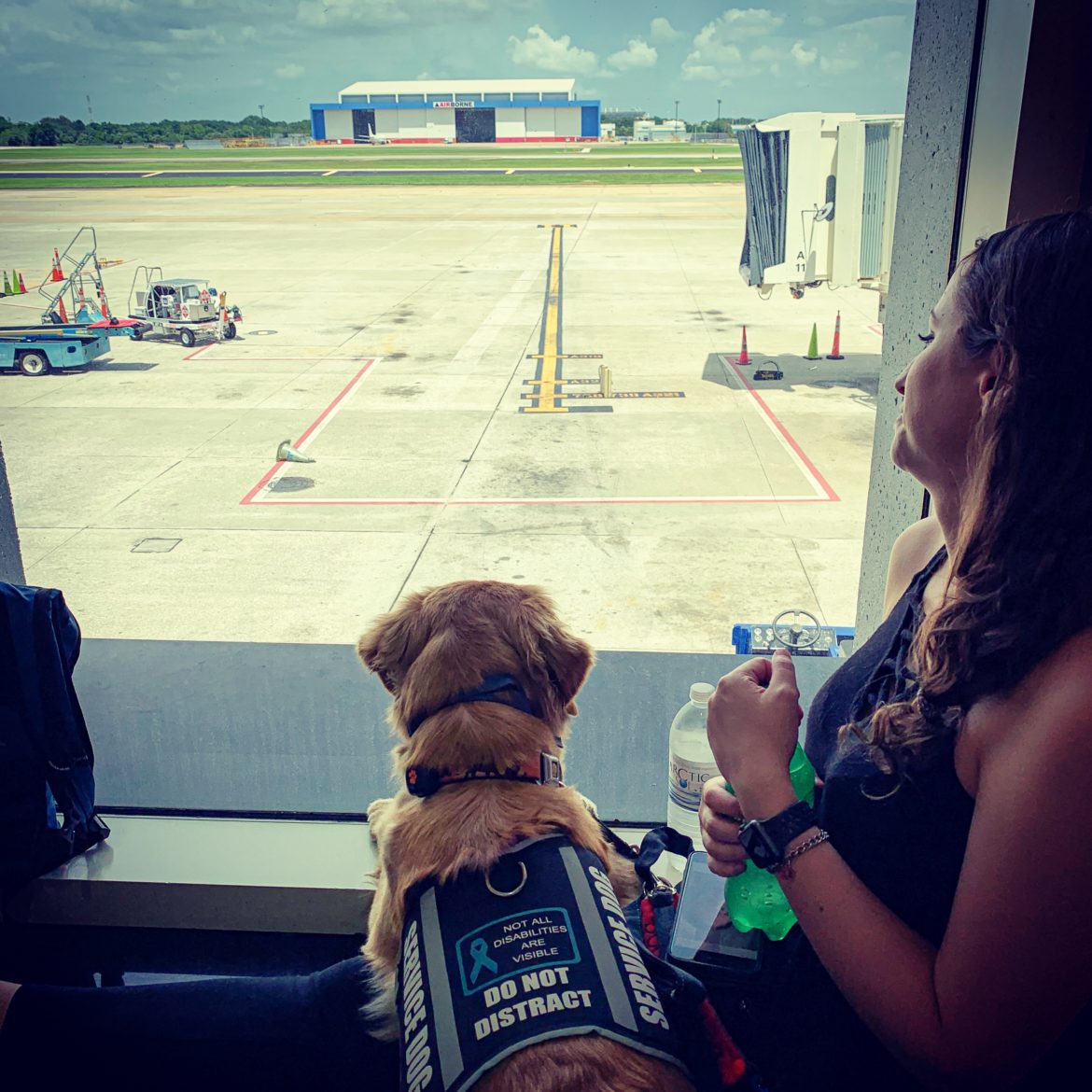Managing Airports and Flying
TOP TIPS FOR HOW TO NAVIGATE TRAVELLING BY PLANE WITH YOUR ASSISTANCE DOG, INCLUDING THE AIRPORT
IF YOU’RE AFTER A GUIDE TO THE LOGISTICAL/PRACTICAL PROCESS OF FLYING TO AND FROM THE UK, WE RECOMMEND THIS ARTICLE
Author: Dory Adelie
What to Bring
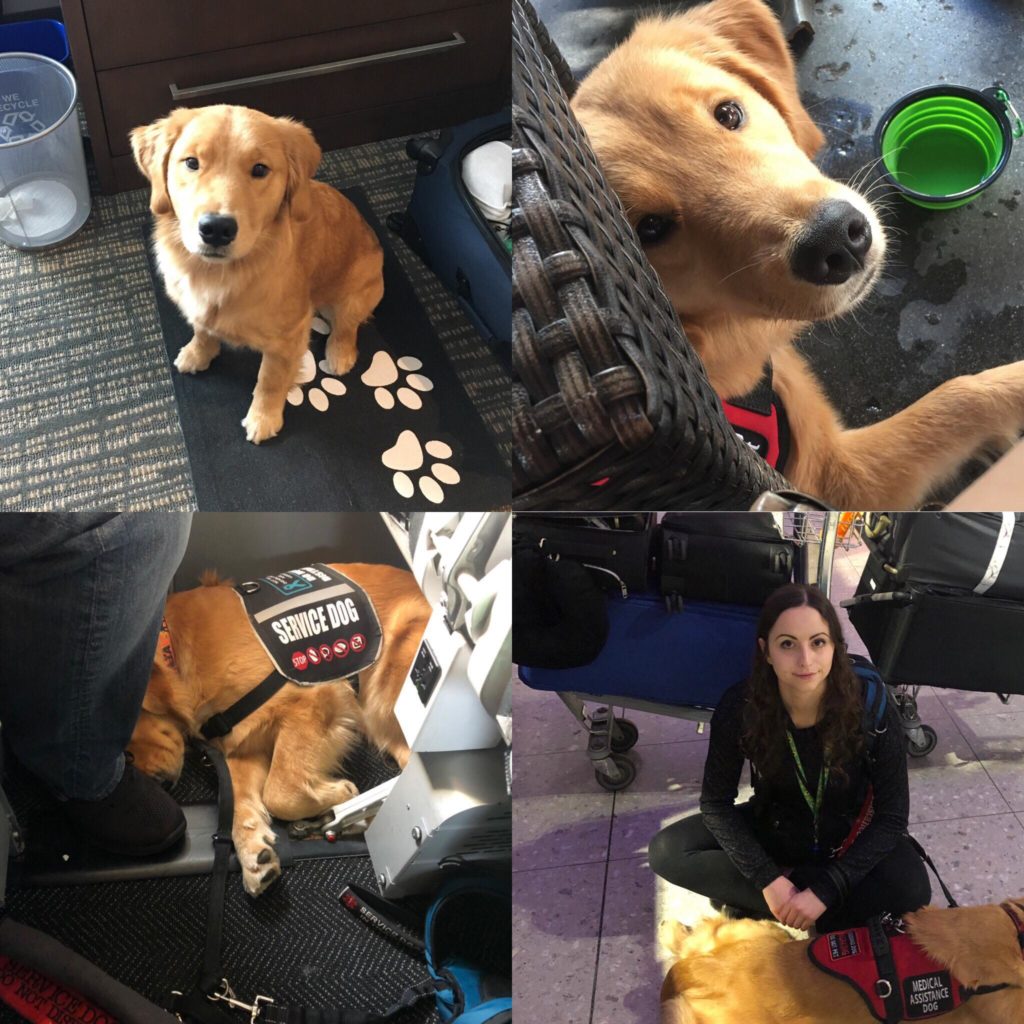
- Bowls: Collapsible silicone portable bowls on carabiners in hand luggage (1 for water, 1 for food) and ziplock bags of kibble (in case you have a delay in getting your checked bags)
- Water: Small or refillable travel water bottle – drink or use before security, then take empty, then get refills from cabin crew on plane)
- Mat: to lie on during the flight – if you already use a settle mat, then this is perfect
- Puppy pads: in case of emergency toilet needs e.g. on the plane (some airlines require this as a plan in place for longer flights)
- Folder: with printed documents in (including Rabies certification – find out more about these in our Air Travel article)
- Treats and favourite chew toy in case of long waits (especially good idea if they are not an experienced flyer – use treats during take off and landing)
- Wipes & Clean Up Kit: in case you need to clean up anything or make them smell fresher
- Your usual items when you go out with your dog e.g. poop bags
- Mini lint roller or clothes brush
- Non metallic vest and leash for security [not essential but easier]
- Appropriate labelling for your dog for your destination e.g. patches, leash wrap or vest labelled “Service Dog” for USA
- Any weather appropriate gear for your destination (boots, cooling jacket etc.)
- Car seatbelt/harness (some airlines request this – find out if yours does)
How to Make it Easier
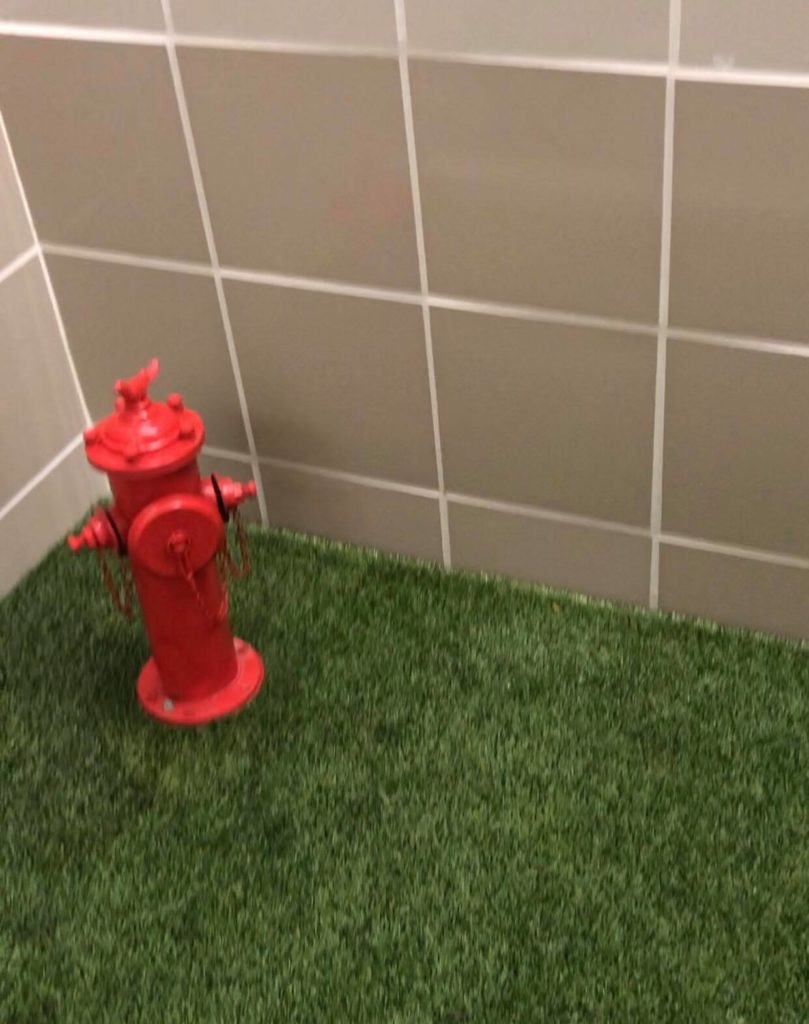
- Relief Areas: Research beforehand the locations of relief areas at outbound airport and destination (bear in mind that currently at London Heathrow T3 there is no designated relief area so make sure to research it in advance and contact them if you’re not sure. US airports are much better with these and hubs have multiple ones)
- Grooming: Brush your dog thoroughly before travelling to minimise shedding, especially if they shed a large amount
- Adjust food: If you have a morning flight, give them dinner the night before but no breakfast; if it is an afternoon flight, give them an early breakfast but no meals after that
- Adjust water: Give small amounts at a time and bear in mind the amount of treats you are giving (more treats = more water) and the length of your flight (remember most dogs sleep through the night without needing water) – just make sure to fully rehydrate them afterwards
- Treats: Give them little treats even if they don’t “need” treats to work, it is a particularly stressful and demanding environment
- Documents: Get a folder for your dogs travel/health paperwork and keep it accessible at the airports – you will likely need it at check-in
- Allow extra time: at departures and for any layovers to account for bathroom breaks and bear in mind that relief areas may be far away
- Boarding: You can board first with most airlines if that helps you, as part of the group needing “extra time”, or board last if you prefer
- Leash: If your dog ever works on a cross body leash or waist lead, then practise this as it leaves both your hands free (NB: do NOT do this with young dogs or ones which do not heel well, or try this last minute)
Training Preparation
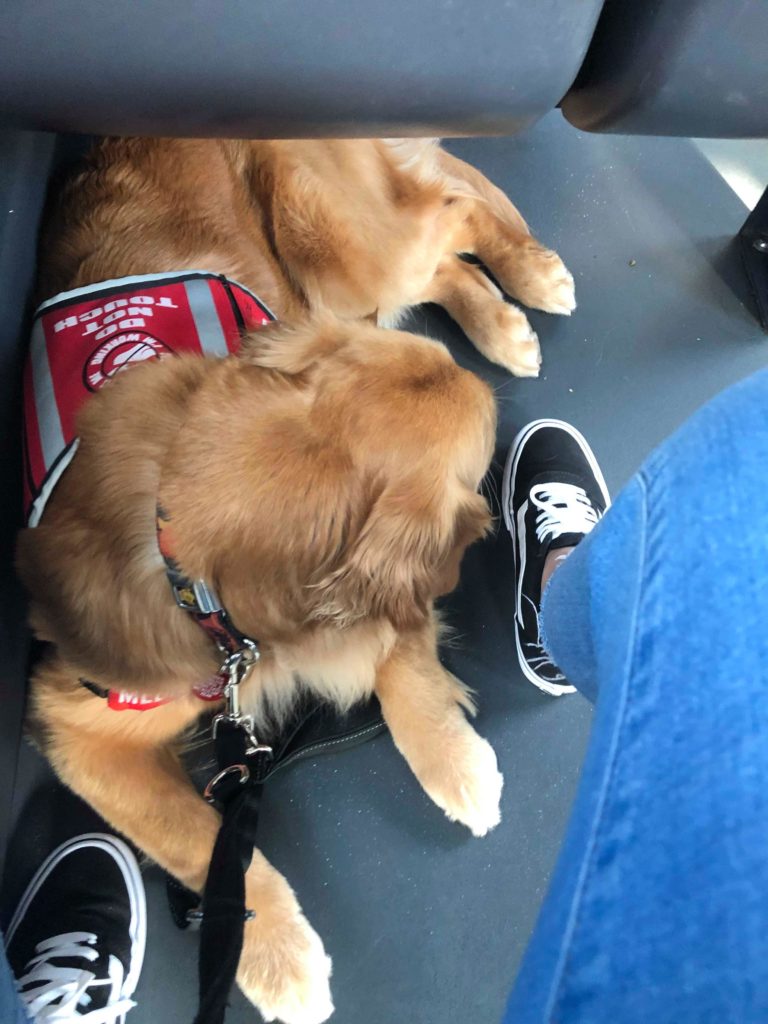
- Flying Practice: Travel on trains and buses and make this a positive experience with treats so they get used to vibrations on floor and the sounds
- Airport Practice: Spend time just sitting/walking around busy/echo-y places e.g. train station hubs (e.g. Waterloo, Kings Cross, Birmingham New Street) and malls/shopping centres
- Long Down Stays: Practise these in small spaces preferably tucked under your legs or curled up in front of them, practise self-settling if they know it
- Tucking: If your dog is large or has a habit of stretching out, work on them curling up tighter (they cannot extend into the aisle and should not be in your neighbour’s foot space either unless you are together)
- Desensitisation: Make sure your dog is desensitised to suitcases, trolleys, loud noises/things being dropped (e.g. trays), people walking or running past them, public-address announcements
- Queues: Make sure your dog is good at being in queues and if it helps work on a block/cover command to give you space.
- Potty/Toilet: Work on your dog going toilet on command and learn their early signs indicating they need to go
- Heeling: Practise your dog heeling alongside a trolley (in case you get a luggage trolley) and/or with an empty suitcase the other side of you
- Security: Practise dropping leash, walking short distance away, turning and recalling dog on command for metal detectors
